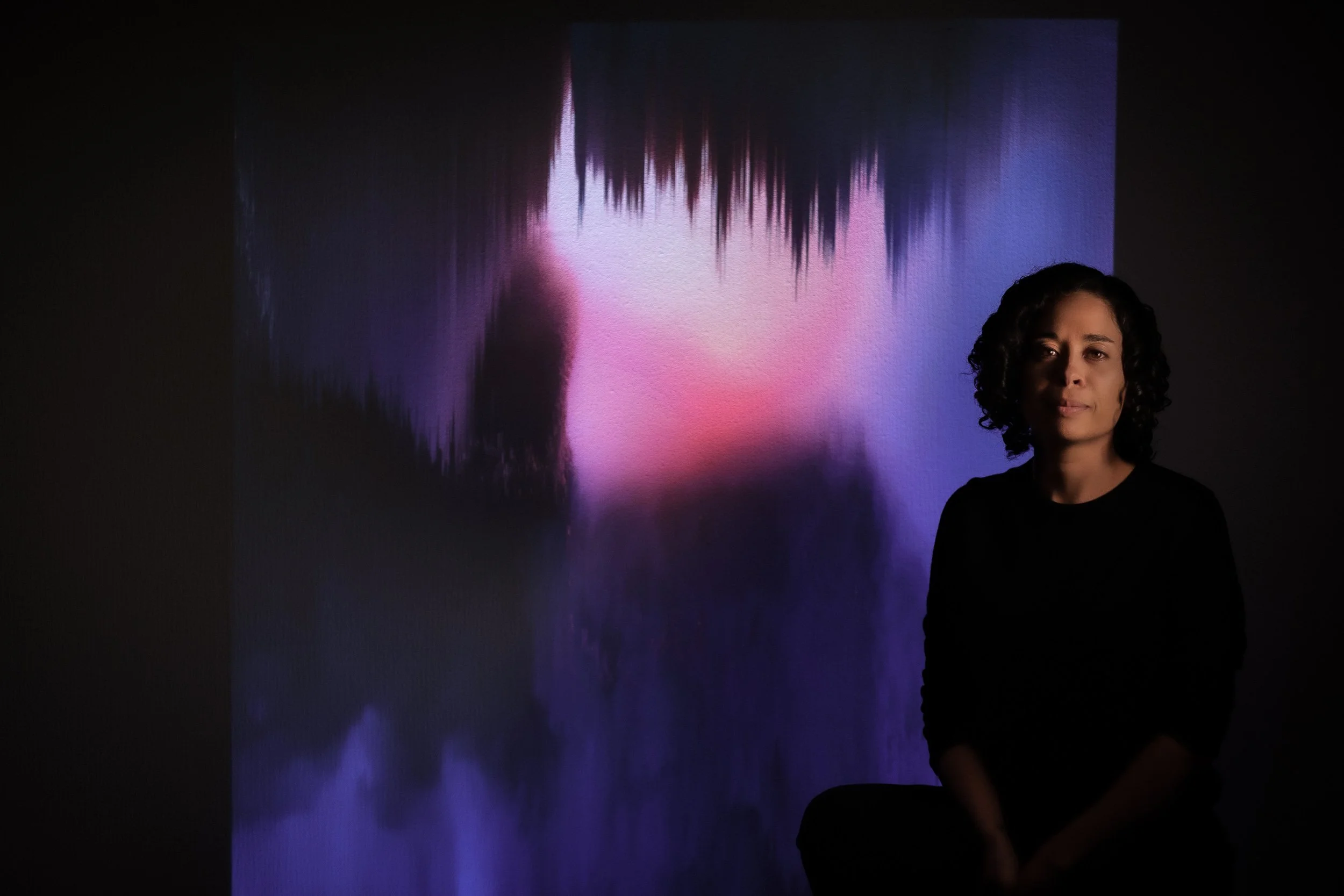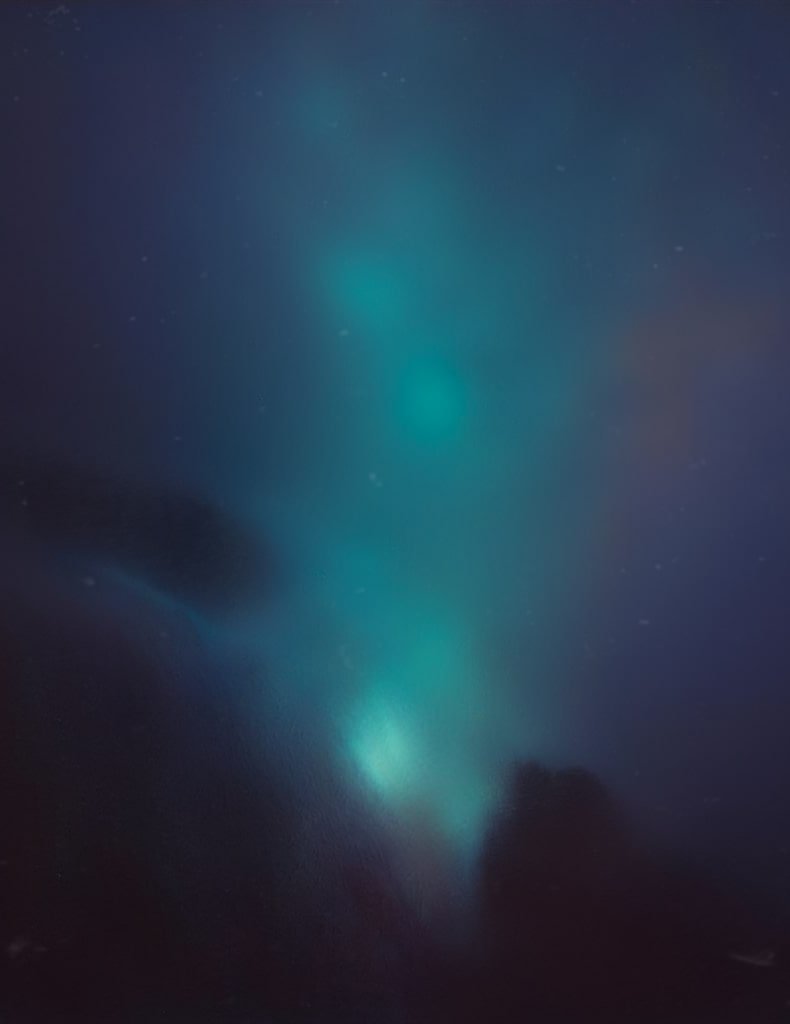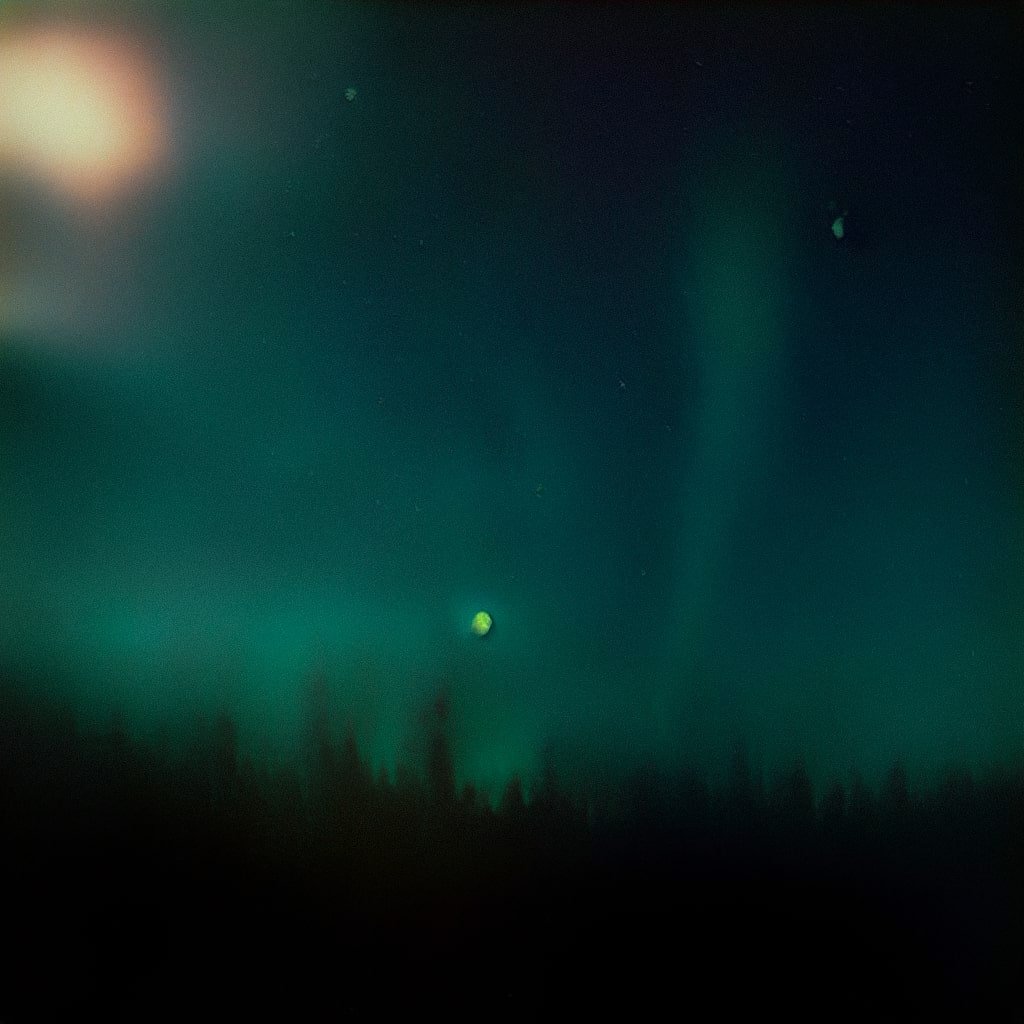10 Questions with Lela Amparo
Al-Tiba9 Art Magazine ISSUE14 | Featured Artist
Represented by the talent agency MTArt, multidisciplinary visual artist Lela Amparo uses machine learning (GAN) to create visual imagery that showcases an otherworldly atmosphere. She also is an ambient music producer who merges her music and art to make a multi-sensory experience for the end viewer. Amparo specialises and takes great pleasure in transporting the viewer and listener to a different dimension.
Born and raised in Tucson, Arizona, and now residing in Gothenburg, Sweden – Amparo draws her inspiration from the great outdoors. Often escaping to remote destinations, she incorporates her admiration for nature in every piece she creates.
Lela Amparo - Portrait
ARTIST STATEMENT
“The line between what is and isn't real continues to blur. After uprooting myself from my home of Tucson, Arizona - I found myself embracing the lush forests of Norway and Sweden. For the past decade I've compiled countless data sets of my photography from both" the before and after." Whether it was endless sunsets sprawled across southern Arizona or flickering northern lights in Kiruna, Sweden - these photos continued to hide on my hard drive until one day, I decided to ask for help from a machine. I began to input different data sets of my photography into machine learning and asked what the machine thought I was feeding it. Shortly after, I began to receive visuals of places that didn't entirely exist but were created from my own actual experiences and photography. The end result is what you see in these selected works - the in-between.“
— Lela Amparo
It Feels Good To Be Around You, Digital, 2020 © Lela Amparo
Get your limited edition copy now
INTERVIEW
Please, introduce yourself to our readers. You are a visual artist and ambient music producer. When did you decide to be an artist?
Hej everyone! I'm Lela Amparo, and I'm a multi-disciplinary artist with a focus on digital landscapes and ambient music. Though the two subjects might sound opposing, they both share quite a bit of common ground - whether it's inspiration or even creative techniques. My artwork is rooted in photography, which is something my mother got me into at a young age as she had a passion for capturing monsoon storms on film. Growing up, I always had a camera with me, but I quickly realized I wasn't terribly great with portraits or street photography, and rather I leaned into capturing landscapes. I never quite had a moment where I wanted to be an artist, but rather I always appreciated the sense of relief this hobby gave me.
Did you first get interested in visual art or music? And what inspired you to pursue both?
My first love was music, but at the time, I probably didn't recognize this. My parents had such a great taste in music that from an early age, I was inspired by the likes of Sade, Red Hot Chili Peppers, Jimi Hendrix, and many more. Around the age of 10, my mom bought me a cheap electric guitar as a way to occupy my summer vacation. Soon enough, I was glued to learning guitar tabs and being able to play along with my favorite bands. As time went on, this turned into me starting my own bands, eventually going on tour, and up to the present day of releasing my own ambient works.
What inspired me to continue exploring music and photography was being able to capture certain feelings, emotions, and memories in time, almost like a living time capsule, where I could look back in time and understand why I was so into certain styles or visuals at different periods in my life.
How do these two different worlds influence your work? Is there any correlation between your work as a producer and your artworks?
On the surface, it might not seem as though either of these subjects influence one another, but at my core, they do. I never felt that I could fully express myself through just one of these creative avenues - so instead, what I'm crafting through music tends to seep out and settle within my visuals and vice versa. My music often has a melancholic undertone; sometimes, it might be more subtle and other times quite intense - but the same could be said for my visual works as well. I go through these swells of having very subtle, visual pieces, and then other times, I have this need to dial up the intensity and showcase another side.
How would you define yourself as an artist? And how did this definition change over the years?
Oh, this is a tricky one to answer, to be honest! I've found others being able to define my work easier than I can (which might sound strange and even a bit embarrassing) but to be honest, and I never set out with a certain framework or matrix that I needed to fit within. I would say the ambient undertone is the one red thread in everything I create, regardless of whether it's visual or audio.
Night Patterns, Digital, 2020 © Lela Amparo
Memories From A Past Life, Digital, 2020 © Lela Amparo
Let's talk about your work. You create fictional landscapes from photographs of real places you have visited. How did you come up with this concept?
My visual art is based on my photography, and it was honestly an accident that it turned out this way. Since I have been into photography for almost 20 years, you can imagine the amount of hard drives I have with various landscape photos from all my travels over the years. Especially when I moved to Norway, I found myself with tens of thousands of RAW images, but I quickly became a bit disappointed, realizing these would continue to sit on my hard drive and only collect dust.
It was this sense of sadness that caused me to explore other ways to use my photography. Around three or four years ago, I learned about Machine Learning and quickly became interested in this bubble. As I began to recognize that you could create data sets and train models - my first thought was, "what if my data sets were my own photos?" And from there, I fell into a rabbit hole and never stopped.
Your landscapes remind us of northern regions, and their colors almost recall Northern Lights. As you live in Sweden, how much are you influenced by your surroundings?
My work is definitely influenced by my surroundings, and especially having lived in Norway (and now Sweden), the northern lights are a massive source of inspiration for me. Though based on opposite ends of the world, I've always had the same feeling of awe when seeing the aurora or a striking sunset in the Arizona sky. They both share this fleeting sense of wonderment and one that I'm always chasing. Speaking of data sets, I would combine photos of the northern lights I captured into my data sets, which you can often see floating across my work. This same concept goes with the endless sunsets of Arizona from all the photos I captured while growing up there.
Swords, Digital, 2022 © Lela Amparo
Erase You, Digital, 2022 © Lela Amparo
Proof Of My Existence, 2022 © Lela Amparo
Frozen Moments, Digital, 2022 © Lela Amparo
And what other sources of inspiration would you quote for your work?
Aside from my current surroundings, other sources of inspiration include spoken word and capturing those moments as I travel or move through the world. It's not uncommon for me to have my iPhone audio recorder out and ready when I feel I'm living in one of those moments. Whether it's the in-flight status from a transatlantic flight, or just a night out with friends - capturing those moments on audio are other little gems that tend to find their way into my work. Most notably, I used an audio recording from my then-girlfriend (now wife), who had said something along the lines of missing me as we were in a long-distance relationship. I loved the genuine feeling from this and later included it in my song, "Ruby."
Your works are mostly digital; what do you think of Crypto art and NFTs? 9.) And how has your perception changed now that the Crypto market has crashed significantly? Do you still believe NFTs will be the future of art?
With my work mainly being digital, I feel that in the start, it made for faster development and technique testing, but as I become more comfortable within my own style, I'm more and more open to the idea of physical versions and experimenting with it. For example, I had a few pieces at UBP Monaco, and it was an experience seeing what started as a digital creation blown up to something much larger than what I could have imagined. In regards to Crypto and NFTs, it's a space I was interested in from an early time and before it became this disposable term that everyone now throws around. What attracted me to it and platforms like Superrare was the unknown and experimentation of it all. I remember when I minted my first piece and thought, "This might be something, or this might be nothing at all - and either are absolutely okay." I'm still fascinated by the concept and what this could mean for future use cases; however, I understand if it's not everyone's cup of tea.
Finally, what are you working on now? Do you have any new projects or series you are working on?
As of late, I've been working more with digital collages and creating more surreal-looking landscapes. I always enjoy pushing myself into subjects I'm not entirely familiar with, and this is one of them. I'm hoping to test some different printing techniques with these pieces as they have a more vivid color palette and have connected with other audiences I hadn't previously been able to do. And in conjunction with that, I'm releasing my first full-length album, "Day and Night," on March 10th. It was the first time I stopped working as a solo producer and went to a studio with a full band and a fellow producer (Corbin Dooley and Barbara Shucko) to bring new life to some previously unreleased material of mine. I'm eager to see how people react to both these new visuals and audio as it ventures into a new territory that I've never explored but one that I still find a deep connection with.
Artist’s Talk
Al-Tiba9 Interviews is a promotional platform for artists to articulate their vision and engage them with our diverse readership through a published art dialogue. The artists are interviewed by Mohamed Benhadj, the founder & curator of Al-Tiba9, to highlight their artistic careers and introduce them to the international contemporary art scene across our vast network of museums, galleries, art professionals, art dealers, collectors, and art lovers across the globe.

























